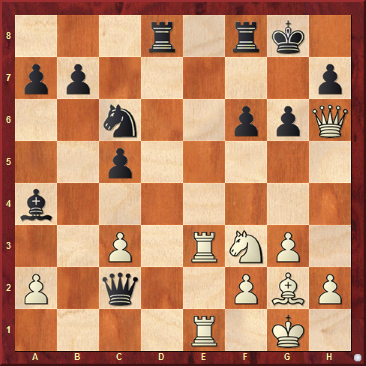|
Example Tactical Analysis |

|

|
|
|
Example Tactical Analysis |

|

|
Example Tactical Analysis
The Full Analysis can be used in various ways. Many tournament players use this function for the analysis of their own games, which is of course helpful when at a later date they wish to look specifically for mistakes in their own games. For my part, I really like using the function to investigate games by the legendary chess greats of the past. It is always fascinating what the engines can find in the games of great players.
The function can be deployed both directly in the board window for the game loaded and also in the games list of a database to deal with several selected games. There you simply highlight several game entries by holding the Ctrl-key and clicking on the games which are to be submitted for analysis.
The dialog offers various options; on fast computers a short thinking time setting for a single move also offers as a rule plausible results. According to the time prescribed for analysis the result will be more or less precise, although the analysis will then also take longer.

But this should not pose a problem because the analysis can be carried out completely in the background whilst you are doing other things on your computer.
As a model, I have chosen the legendary 18th game from the third WCh match between Botvinnik and Smyslov. After Smyslov’s 22nd move as Black (…Rcd8) the following position arose:

Botvinnik continued with 23.Bh3, but could have won by force with the beautiful double sacrifice 23. Nd4 !.23. Nd4 cxd4 24. Bd5+ Rxd5 25. Re8 1-0
Now let us take a look at a section of the notation of the game after the tactical analysis.

As you can see, this beautiful sacrificial line is found immediately by the tactical analysis within the prescribed thinking time. As the example shows, every tournament player should make use of this function for reviewing his or her own games.